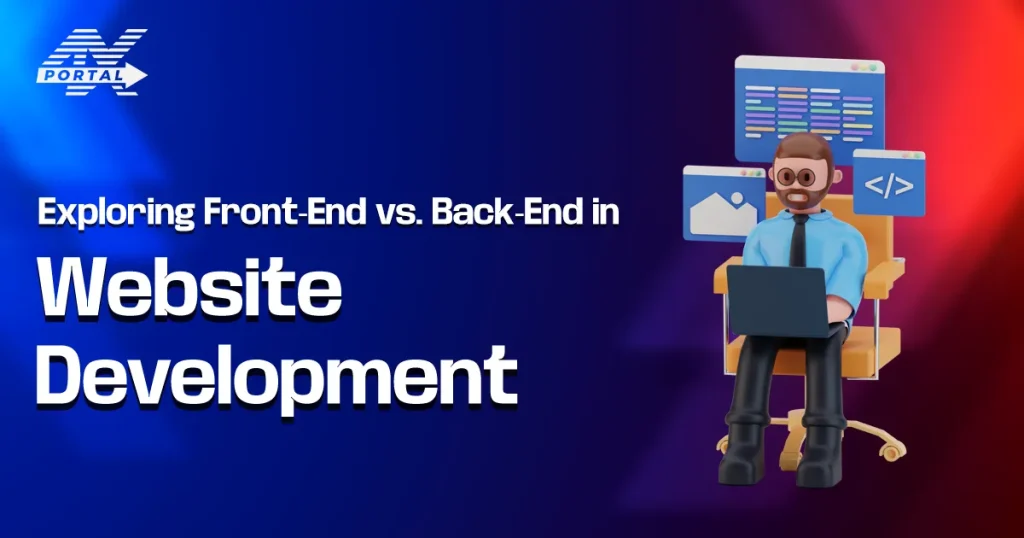Website development is the backbone of the online world, allowing businesses, organizations, and individuals to create an online presence. It consists of several processes, ranging from the creation of the user interface to database handling and server setup. At the center of website development are two key technologies: front-end and back-end development. Knowledge of the front-end vs. back-end development difference is vital for anyone who wants to get started in this profession or work with developers.
Understanding Front-End Development
Front-end development, or client-side development, is concerned with the visual and interactive elements of a website. It is the process of developing the layout, design, and features that users directly interact with in their web browsers. Front-end developers apply a mix of front-end technologies like HTML, CSS, and JavaScript to organize content, style elements, and implement dynamic functionality. The objective is to provide a trouble-free user experience by making sites pleasing to the eye, responsive, and simple to navigate.
Popular Front-End Technologies
To create a responsive and interactive website, front-end developers use a range of technologies and frameworks. HTML (HyperText Markup Language) is the basis for content structuring, and CSS (Cascading Style Sheets) adds presentation by specifying styles and layouts. JavaScript, a versatile scripting language, enables developers to introduce interactivity, animations, and dynamic content. Moreover, contemporary front-end frameworks like React, Angular, and Vue.js assist in simplifying development by offering reusable components and effective state management.
The Function of Back-End Development
While front-end development is concerned with the user interface, back-end development, or server-side development, drives the functionality of a website in the background. It entails the management of databases, server logic, and application architecture to make sure that data is processed and delivered appropriately to users. The back-end is the backbone of a website, processing requests, storing data, and performing operations that make front-end features work seamlessly.
Principal Back-End Platforms and Technologies
Back-end programmers use a variety of programming languages and frameworks to create and develop the server-side of a website. Some of the most popular back-end programming languages are Python, Java, PHP, Ruby, and JavaScript (Node.js). Django, Flask, Express.js, Ruby on Rails, and Spring Boot are some of the frameworks used which make development easier by providing pre-existing tools and libraries for database management, authentication, and API integration. These back-end frameworks are essential in creating secure, scalable, and efficient web applications.
Front-End vs. Back-End Development: Major Differences
The main distinction between front-end vs. back-end development is their purpose and functionality. Front-end development concerns what users view and interact with, making the experience intuitive and engaging. Back-end development, on the other hand, takes care of the behind-the-scenes operations, managing data storage, user authentication, and server-side logic. While front-end developers deal with design concepts and user interface, back-end developers focus on coding logic, security, and system architecture. Both are needed to develop a fully functional and dynamic website.
The Importance of Full-Stack Development
With the rising need for all-around developers, most professionals specialize in full-stack development. A full-stack developer has knowledge in both front-end and back-end technologies, making them capable of developing entire web applications from scratch. Full-stack developers are considered very valuable in the technology world since they are able to take care of several aspects of website development, including designing user interfaces, handling server-side operations, and databases.
Selecting the Right Course in Website Development
For website development, the decision to pursue front-end or back-end development is up to personal inclinations and technical capabilities. If you like handling design, animation, and user interface, then front-end development would be an ideal option. Alternatively, if you like problem-solving, database management, and system logic, then back-end development would suit you better. Learning both aspects can also give a chance for full-stack development, which is a complete study of web development.
Conclusion
Front-end vs. back-end development are the two key facets of website creation, both separately but deeply involved in generating operational and stimulating websites. With front-end technology concentrating on users’ interfaces as well as the interactions between these interfaces and programs, back-end frameworks take on the server side of web apps that makes such applications function. Knowing the differences between them can guide developing professionals to plan their careers efficiently and work optimally for the constantly growing site development field.










